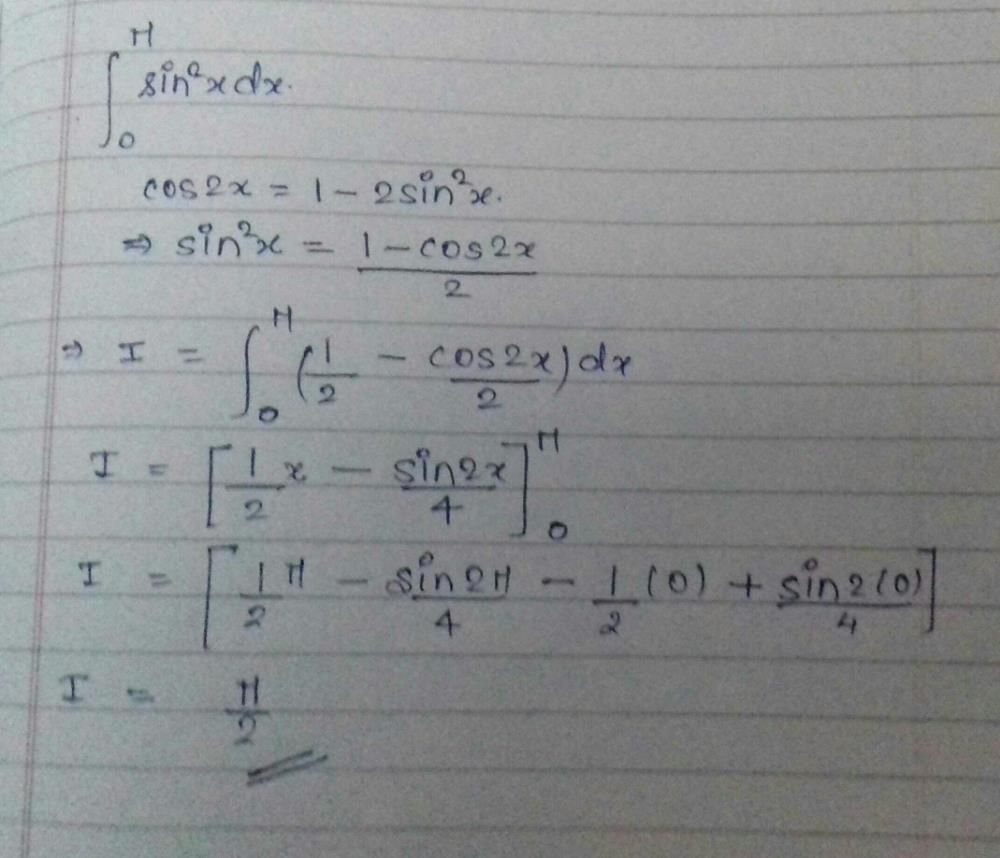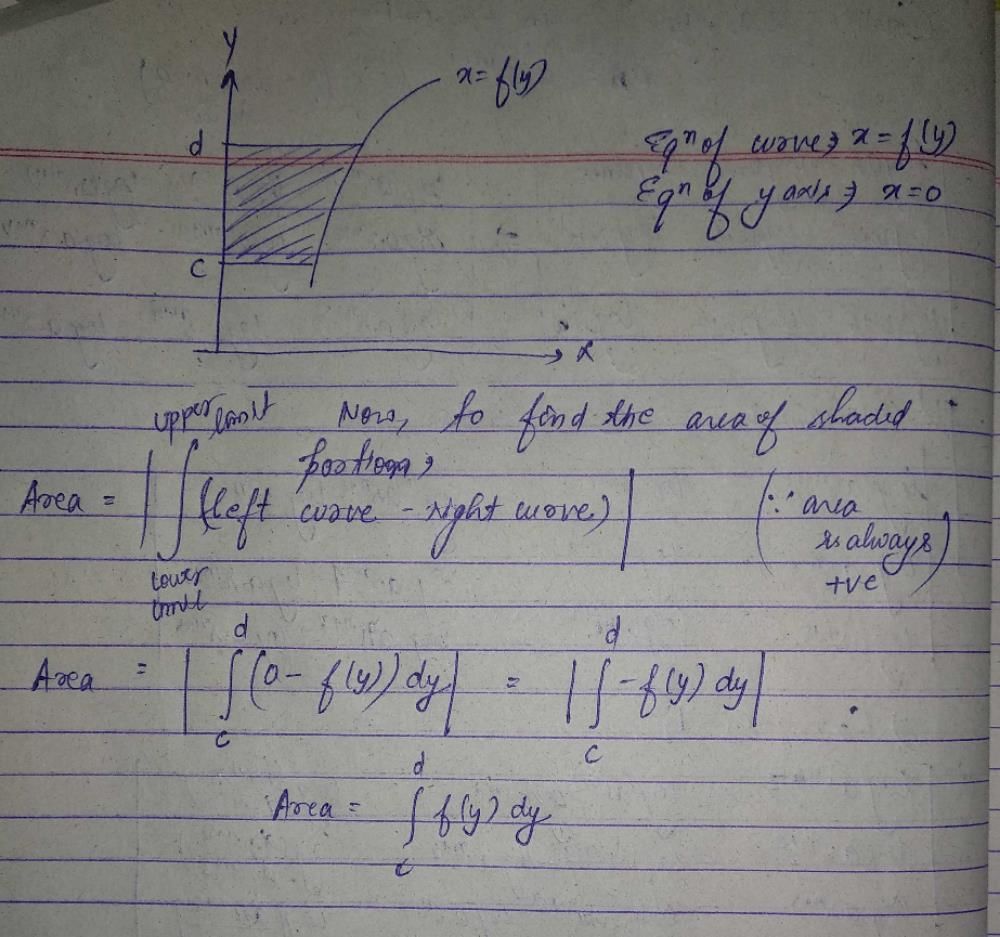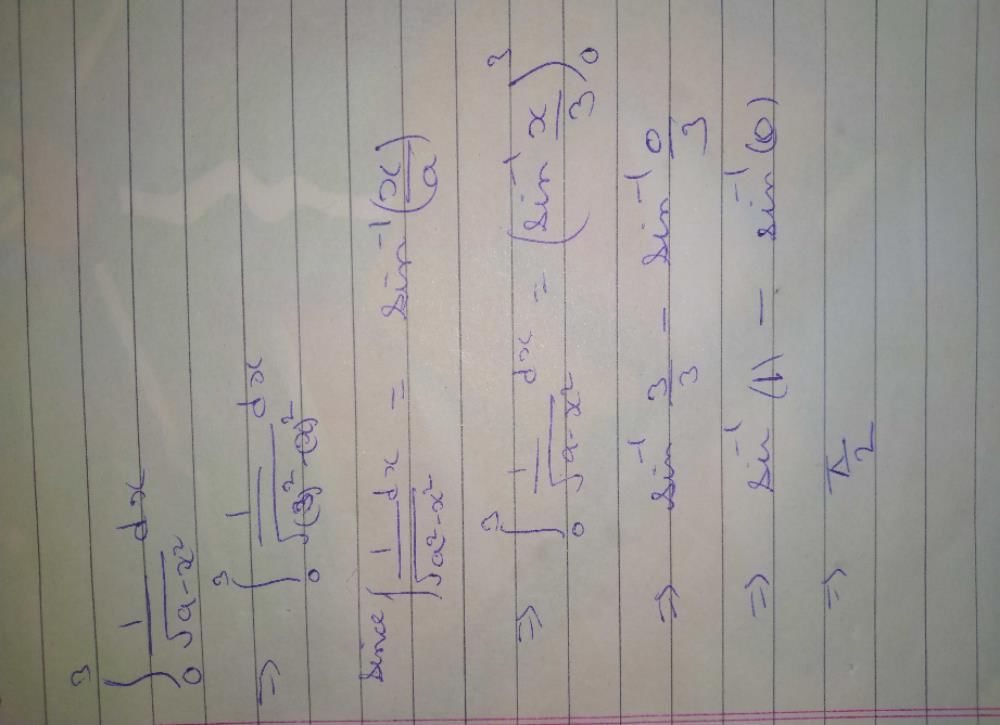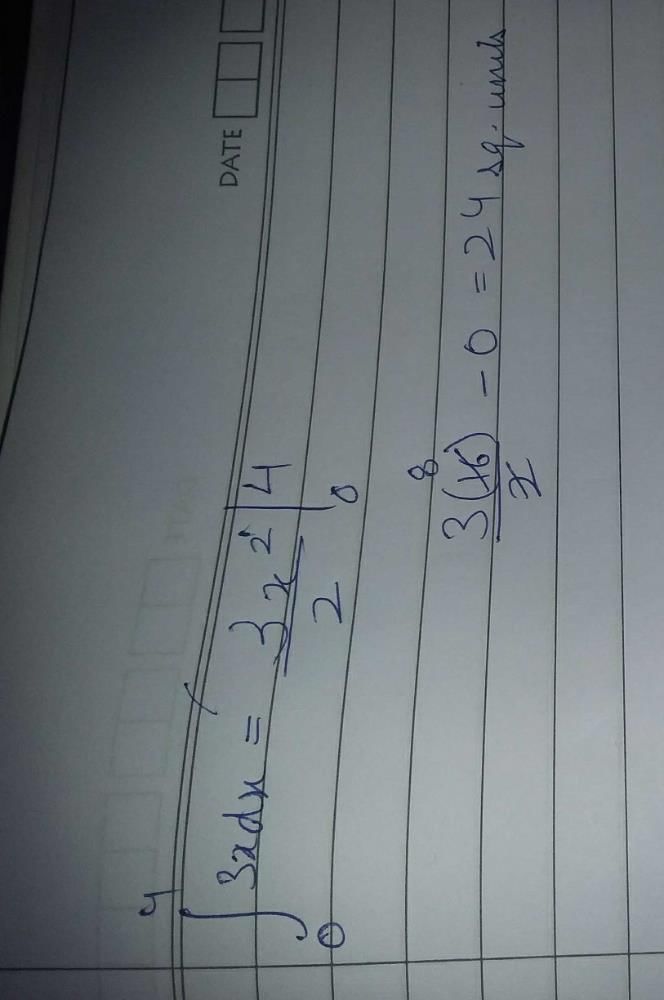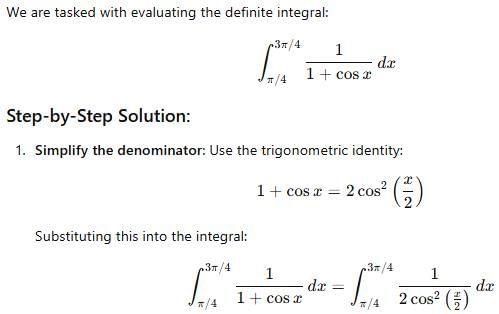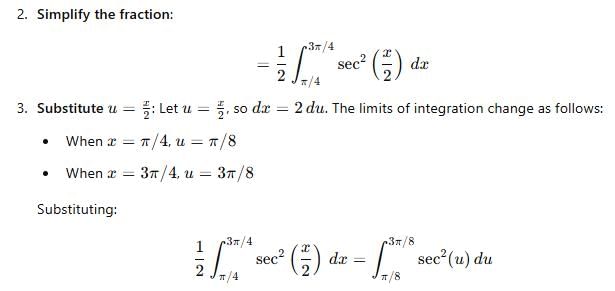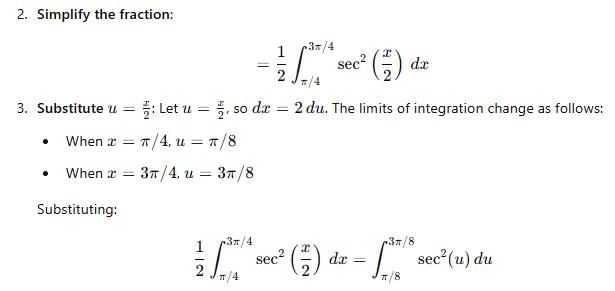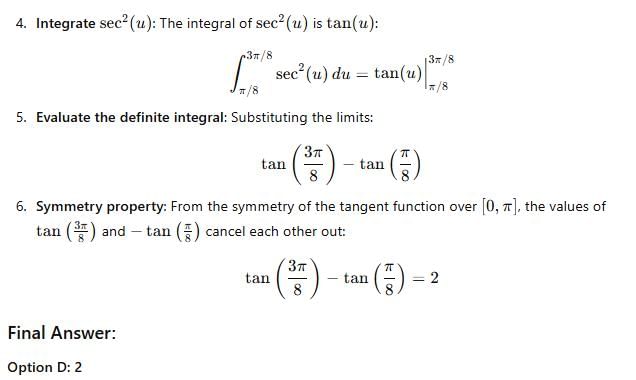All Exams >
JEE >
Weekly Tests for JEE Preparation >
All Questions
All questions of November Week 1 for JEE Exam
A thick plano convex lens made of crown glass (refractive index 1.5) has a thickness of 3cm at its centre. The radius of curvature of its curved face is 5cm. An ink mark made at the centre of its plane face, when viewed normally through the curved face, appears to be at a distance ‘x’ from the curved face. Then, x is equal to: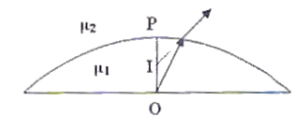
- a)2.5cm
- b)2.3cm
- c)2cm
- d)2.1cm
Correct answer is option 'A'. Can you explain this answer?
A thick plano convex lens made of crown glass (refractive index 1.5) has a thickness of 3cm at its centre. The radius of curvature of its curved face is 5cm. An ink mark made at the centre of its plane face, when viewed normally through the curved face, appears to be at a distance ‘x’ from the curved face. Then, x is equal to:
a)
2.5cm
b)
2.3cm
c)
2cm
d)
2.1cm

|
EduRev Humanities answered |
A thick Plano convex lens made of crown glass (refractive index 1.5) has a thickness of 3cm at its centre. The radius of curvature of its curved face is 5cm. An ink mark made at the centre of its plane face, when viewed normally through the curved face, appears to be at a distance ‘x’ from the curved face, and we have to determine the value of ' x'
According to the picture, the ray of light gets refracted at the interface between the air and the lens from the object 'p' and 'I' is the refracted image of 'p'
object distance 'u'= BO
Image distance 'v'/'x' = BI
we know
n2/v - n1/u = (n2- n1) / R
or 1/v - 1.5/(-3 )= (1-1.5)/ (-5) [where n2= 1, n1= 1.5 ,u= -3 ,R= -5]
so, 1/v = -6/15
or, v = -2.5
so, x is equal to 2.5 cm
According to the picture, the ray of light gets refracted at the interface between the air and the lens from the object 'p' and 'I' is the refracted image of 'p'
object distance 'u'= BO
Image distance 'v'/'x' = BI
we know
n2/v - n1/u = (n2- n1) / R
or 1/v - 1.5/(-3 )= (1-1.5)/ (-5) [where n2= 1, n1= 1.5 ,u= -3 ,R= -5]
so, 1/v = -6/15
or, v = -2.5
so, x is equal to 2.5 cm
A ray of light going from denser to rarer medium suffers refraction at a concave surface. Which of the following relations is correct?- a)

- b)

- c)

- d)

Correct answer is option 'A'. Can you explain this answer?
A ray of light going from denser to rarer medium suffers refraction at a concave surface. Which of the following relations is correct?
a)
b)
c)
d)

|
EduRev JEE answered |
Solution :
The correct option is Option A.
Laws of refraction;-
The incident ray,the refracted ray and the normal to the refracting surface at the point of incidence lie in the same plane.
For a given pair of media and for a given colour of light the ration between the sine of angle of incidence to the sine of refraction is a constant.This constant is known as refractive index of the second medium with respect to the first medium.
When a ray of light passes through a glass slab, ∠i,∠r and the normal all lie in the same plane.
When a ray of light passes from one medium to another, here from air to glass or glass to air, the ratio sini / sinr = constant.
Evaluate as limit of sum 
- a)20/5
- b)15/2
- c)20/3
- d)3/20
Correct answer is option 'C'. Can you explain this answer?
Evaluate as limit of sum 
a)
20/5
b)
15/2
c)
20/3
d)
3/20
|
|
Om Desai answered |
∫(0 to 2)(x2 + x + 1)dx
= (0 to 2) [x3/3 + x2/2 + x]½
= [8/3 + 4/2 + 2]
= 40/6
= 20/3
= (0 to 2) [x3/3 + x2/2 + x]½
= [8/3 + 4/2 + 2]
= 40/6
= 20/3
Consider a curved surface between two different media with refractive indices n1 = 1 and n2 = 2. The relation between radius of curvature, image distance and object distance is given by- a)

- b)

- c)

- d)

Correct answer is option 'D'. Can you explain this answer?
Consider a curved surface between two different media with refractive indices n1 = 1 and n2 = 2. The relation between radius of curvature, image distance and object distance is given by
a)
b)
c)
d)
|
|
Gaurav Kumar answered |
The relation between radius of curvature, image distance and object distance is given by
n2/v-n1/u=n2-n1
un2-vn2/vu=n2-n1/R
R=vu(n2-n2)/un2-vn2
=uv(2)/u(2)-v(1)
=[uv/2u-v)
n2/v-n1/u=n2-n1
un2-vn2/vu=n2-n1/R
R=vu(n2-n2)/un2-vn2
=uv(2)/u(2)-v(1)
=[uv/2u-v)
In the adjoining figure, SS is a spherical surface separating two media of refractive indices n1 and n2 where n1 > n2. C is the centre of curvature of the spherical surface. An observer, keeping his eye beyond C in the medium of refractive index n2 views the refracted image of an object AB placed as shown in the medium of refractive index n1. The image will be: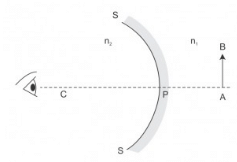
- a)real, upright and diminished
- b)virtual, upright and magnified
- c)real, inverted and magnified
- d)virtual, upright and diminished
Correct answer is option 'D'. Can you explain this answer?
In the adjoining figure, SS is a spherical surface separating two media of refractive indices n1 and n2 where n1 > n2. C is the centre of curvature of the spherical surface. An observer, keeping his eye beyond C in the medium of refractive index n2 views the refracted image of an object AB placed as shown in the medium of refractive index n1. The image will be:
a)
real, upright and diminished
b)
virtual, upright and magnified
c)
real, inverted and magnified
d)
virtual, upright and diminished

|
Mohit Rajpoot answered |

The image will be virtual, upright and diminished.
A colourless liquid, at room temperature, reacts with soda-lime to form sodium salt of a carboxylic acid and ammonia gas. The liquid is- a)propanoic acid
- b)formamide
- c)propanamide
- d)methyl enthanoate
Correct answer is option 'B'. Can you explain this answer?
a)
propanoic acid
b)
formamide
c)
propanamide
d)
methyl enthanoate
|
|
Kiran Sengupta answered |
Understanding the Reaction
The reaction of the colourless liquid with soda-lime indicates that the compound must have specific functional groups that can interact with soda-lime, which is primarily a mixture of sodium hydroxide (NaOH) and calcium oxide (CaO).
Identifying the Compound
1. Formamide:
- Formamide (HCONH2) is a simple amide and contains a carbonyl group (C=O) attached to an amine (NH2).
- When treated with soda-lime, formamide undergoes a reaction that leads to the formation of sodium formate (the sodium salt of formic acid) and ammonia gas (NH3).
- The reaction typically involves the dehydration of the amide followed by hydrolysis.
2. Other Options:
- Propanoic Acid: This is a carboxylic acid and would not release ammonia upon reaction with soda-lime.
- Propanamide: Similar to formamide, but it has a larger alkyl group which may not directly produce ammonia when treated with soda-lime.
- Methyl Ethanoate: An ester that does not react with soda-lime to produce ammonia.
Conclusion
The key to understanding why formamide is the correct answer lies in its ability to decompose under the conditions provided by soda-lime, resulting in the formation of the sodium salt of a carboxylic acid (sodium formate) and the release of ammonia gas. Thus, the colourless liquid that reacts as described is indeed formamide (option B).
The reaction of the colourless liquid with soda-lime indicates that the compound must have specific functional groups that can interact with soda-lime, which is primarily a mixture of sodium hydroxide (NaOH) and calcium oxide (CaO).
Identifying the Compound
1. Formamide:
- Formamide (HCONH2) is a simple amide and contains a carbonyl group (C=O) attached to an amine (NH2).
- When treated with soda-lime, formamide undergoes a reaction that leads to the formation of sodium formate (the sodium salt of formic acid) and ammonia gas (NH3).
- The reaction typically involves the dehydration of the amide followed by hydrolysis.
2. Other Options:
- Propanoic Acid: This is a carboxylic acid and would not release ammonia upon reaction with soda-lime.
- Propanamide: Similar to formamide, but it has a larger alkyl group which may not directly produce ammonia when treated with soda-lime.
- Methyl Ethanoate: An ester that does not react with soda-lime to produce ammonia.
Conclusion
The key to understanding why formamide is the correct answer lies in its ability to decompose under the conditions provided by soda-lime, resulting in the formation of the sodium salt of a carboxylic acid (sodium formate) and the release of ammonia gas. Thus, the colourless liquid that reacts as described is indeed formamide (option B).
The value of definite integral depends on- a)The function, the interval and the variable of integration
- b)The function and the variable of integration
- c)The function and the interval
- d)The interval and the variable of integration
Correct answer is option 'C'. Can you explain this answer?
The value of definite integral depends on
a)
The function, the interval and the variable of integration
b)
The function and the variable of integration
c)
The function and the interval
d)
The interval and the variable of integration
|
|
Janani Pillai answered |
Understanding the Definite Integral
The value of a definite integral is influenced by specific factors. The correct answer is option 'C', which states that the value depends on the function and the interval.
Key Factors Affecting Definite Integral
Why Other Options Are Incorrect
Conclusion
In summary, the value of a definite integral is determined by the function being integrated and the interval over which it is evaluated. Understanding these components is essential for solving integral problems effectively in calculus.
The value of a definite integral is influenced by specific factors. The correct answer is option 'C', which states that the value depends on the function and the interval.
Key Factors Affecting Definite Integral
- The Function:
- The definite integral is fundamentally about the area under the curve of a given function over a specified interval.
- Different functions will yield different areas when integrated, hence the value of the integral varies with the function itself. - The Interval:
- The limits of integration, or the interval, play a crucial role.
- Changing the interval will generally change the area under the curve, thus affecting the integral's value.
- For instance, integrating from a to b will provide a different area than integrating from c to d, even if the function remains the same.
Why Other Options Are Incorrect
- Option A: Includes the variable of integration, but this is not a determining factor for the value of the integral. The variable is a placeholder and does not affect the outcome.
- Option B: Omits the interval, which is essential. Without specifying the limits, the integral's value cannot be accurately determined.
- Option D: While it mentions the interval and variable, it neglects the function, which is crucial for calculating the integral.
Conclusion
In summary, the value of a definite integral is determined by the function being integrated and the interval over which it is evaluated. Understanding these components is essential for solving integral problems effectively in calculus.
Chapter doubts & questions for November Week 1 - Weekly Tests for JEE Preparation 2025 is part of JEE exam preparation. The chapters have been prepared according to the JEE exam syllabus. The Chapter doubts & questions, notes, tests & MCQs are made for JEE 2025 Exam. Find important definitions, questions, notes, meanings, examples, exercises, MCQs and online tests here.
Chapter doubts & questions of November Week 1 - Weekly Tests for JEE Preparation in English & Hindi are available as part of JEE exam.
Download more important topics, notes, lectures and mock test series for JEE Exam by signing up for free.
Related JEE Content

Contact Support
Our team is online on weekdays between 10 AM - 7 PM
Typical reply within 3 hours
|
Free Exam Preparation
at your Fingertips!
Access Free Study Material - Test Series, Structured Courses, Free Videos & Study Notes and Prepare for Your Exam With Ease

 Join the 10M+ students on EduRev
Join the 10M+ students on EduRev
|

|
Create your account for free
OR
Forgot Password
OR
Signup on EduRev and stay on top of your study goals
10M+ students crushing their study goals daily

